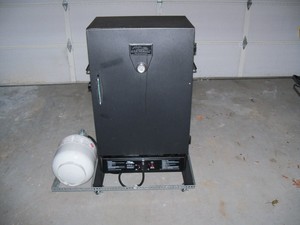Despite the research and advancements in science, for a long time, many boxers refused to train with weights. In the last decade, however, the United States Amateur Boxing Association and boxing professionals have taken note of the progress that European boxers have made with weight training. Now most well known professional fighters regularly workout with weights. After all, in a match where two fighters are equally skilled, the stronger fighter will win.
Not too long ago, it was thought that weight training would make a boxer slower, less flexible, and more prone to fatigue. Many also considered weights to be an unnecessary addition to a boxer’s already grueling physical schedule. But in recent years, science has shown that a properly designed weight routine will increase boxers’ speed, flexibility, and endurance, and is an integral part of bout preparation.
THE BASICS
A boxer should train with weights two to three times a week. Any more than that, and the weight training could interfere with the sport-specific training – sparring, bag work, cardio – and a strong fighter without properly developed skill is no fighter at all. It’s also important to avoid weight training on sparring days, as you’ll need you’re strength in the ring to develop your skill. It’s recommended too, that boxers halt their weight training at least one week before a bout. Save your strength for the fight.
THE STYLE
Boxing workouts should differ from other types of weight training because strength and power – or “explosiveness” – are what the boxer aims to develop. With that in mind, as you train, remember to use quick, explosive movements during all the exercises. If your speed is top-notch, but you need to develop more strength, do lower reps with higher weight – work in the 4-8 rep range. If your strength is good, and you want to maintain it while adding some speed, work in the 8-12 rep range with moderate weight.
Also, remember that a boxer’s training, unlike that of the bodybuilder, is for the purpose of function, not size. Therefore, stay aware of your bodyweight. You don’t want to put on so much muscle that you out-size your weight class. This workout is designed to keep function the priority, by utilizing compound power movements. Try it out, and you’ll fight better, guaranteed.
THE WORKOUT
Barbell Snatches
–Stand over the barbell. Position your feet underneath at shoulder width. Now bend over while squatting down and grasp the bar with a wide grip. Using your legs, explode the barbell up off the floor. When the barbell passes your knees, bring your hips in and start to pull the barbell up with your back. Contract your calves and trapezius muscles simutaneously, raising up on your toes and shrugging your shoulders. Bend your elbows, pulling the bar up with your arms, and descend into a half squat as quickly as possible. With the bar moving up and your body moving down, your arms should re-lock with the barbell overhead. Secure your balance. Use your leg muscles to stand upright from the half squat, keeping your arms locked and the barbell overhead.
Dumbbell Bench Press
–Sit down on a bench with dumbbells resting on your lower thighs. Kick the weights to your shoulders and lie back. Position the dumbbells to the sides of your upper chest with your elbows under the dumbbells. Press the dumbbells up, keeping your elbows to the sides, until your arms are extended. Lower the weight to the sides of the upper chest. Repeat.
Push-Up
— Lie chest down with your hands at shoulder level, palms flat on the floor and a little more than shoulder width apart. Your feet should be together. Straighten your arms as you push your body up off the floor. Keep your back straight, pushing up until your arms are fully extended. Then lower your body to the floor, bending your arms and keeping the body straight. Lower the body until your chest touches the floor. Repeat.
Power Cleans
–Stand over the barbell with the balls of your feet positioned under the bar slightly wider apart than hip width. Squat down and grip the bar with an over hand grip slightly wider than shoulder width. Pull the bar up off the floor by extending the hips and knees. As the bar reaches your knees, vigorously raise the shoulders while keeping the barbell close to your thighs. When the barbell passes mid-thigh, jump upward extending your body. Shrug your shoulders and pull the barbell upward with your arms, allowing your elbows to flex to the sides, and keeping the bar close to the body. Aggressively pull your body under the bar, rotating your elbows around the bar. Catch the bar on your shoulders while moving into a squat position. Hitting the bottom of the squat, stand up immediately. Bend your knees slightly and lower barbell to mid-thigh position, then to the floor. Repeat.
Dumbbell Lunges
–Stand with dumbbells grasped at your sides. Lunge forward with your first leg. Land on your heal then forefoot. Lower your body by bending your front knee until the knee of your rear leg is almost in contact with floor. Return to the original standing position by forcibly extending the hip and knee of the forward leg. Repeat by alternating lunges with opposite leg.
Pull-Ups
–Step up and grasp a pull-up bar with a wide, overhand grip. Pull your body up until your neck reaches the height of your hands. Lower your body slowly until your arms and shoulders are fully extended. Repeat.




